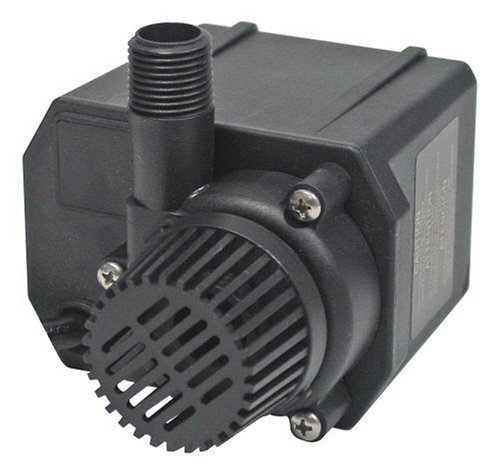For many people, it's never been a question of whether to use a
submersible pump vs. an external pump because most people have
smaller ponds and are used to just using a submersible pump.
They're easy to install, and are pretty reliable - so why even
consider an external pump?
There are a couple of reasons...
But before we go into that, let's briefly talk about the benefits
of submersible pumps first. For obvious reasons, a submersible
pump is named as such because it is designed to be placed in the
pond, and submerged under the water.
These are the easiest of all pumps to install, just drop them in
the water and plug them in - and you’re ready to do. Of course,
you might have some quick plumbing to do, attaching a hose to the
waterfall or to a submersible filter (another article entirely),
but other than that - that's pretty much all there is to it.
Submersible pumps range in size or gallons per hour, from 50 GPH
all the way up to 50,000 gallons per hour, but for most ponds -
pumps anywhere from 350 GPH to 4000 GPH will do just fine...
So why might you also consider an external pump instead?
Here are a couple reasons. First, external pumps can much more
energy efficient. Now, a typical swimming pool or spa pump won't
usually fall into this category - so be careful not to compare
apples to oranges! Pool pumps can also be huge energy hogs, so
always check the amps to compare different pumps together.
Anything over 10 amps will draw a significant amount of $$ out of
your pocket every month in electrical costs.
The external pumps that we are talking about are designed
specifically for ponds and water gardens, and are engineered for
energy efficiency. I'm not sure why those folks in the swimming
pool and spa industry haven't figured out how to this yet, but
I'm sure they'll catch on sooner or later.
I'm inclined to think the average pond owner is a bit more
intelligent than the average pool owner. Why else would someone
choose a pool over a pond? Unless of course you have both, but at
any rate - let's just assume that we're talking about external
pond pumps here.
For comparison, a typical 4000 GPH (gallons per hour) submersible
pond pump will typically draw anywhere from 10 amps all the way
up to 15 amps, depending on the brand. This can really burn a
hole in your wallet (or pocketbook) on a monthly basis, and in
some parts of the country will run you - in energy costs.
In contrast, a comparatively rated external pond pump like the
William Lim Wave I External Pump
([https://www.macarthurwatergardens.com/Pumps/wave_pump_for_ponds.htm])
is rated at 4380 GPH at 3.47 feet of head, and only draws 2.3
amps - that's 3/4 less energy consumption than the submersible
pumps.
When you start getting into larger ponds, 1000 gallons up to
20,000 and above - it's usually a good idea to look into these
more energy efficient pumps. For example, the 3/4 HP Dragon pump
([https://www.macarthurwatergardens.com/Pumps/dragon_pumps.html])
will move 7,770 GPH at almost 5 feet of head (and under pressure)
and only burn 6.2 amps.
External pumps are almost always better for using with
pressurized external filters as well, as submersible pumps are
not designed to handle all the back pressure. Other benefits of
using an external pump include:
-> Easy to clean without getting your hands messy
-> Come with a removable leaf trap which clog less often
-> Easy to hook up to bottom drains or surface skimmers
-> Generally last longer, and easier to repair / replace parts
So that's it, more than enough information for you to make an
educated choice.
Just to recap:
For smaller ponds, and for simple installation and daily use,
submersible pumps are probably your best option. For larger
ponds, 1000 gallons and above, it may be worth looking into an
external pump for your needs. Although they cost a little more
on the front end, the energy savings alone can often more than
offset this increase in cost during the first year of use alone.










